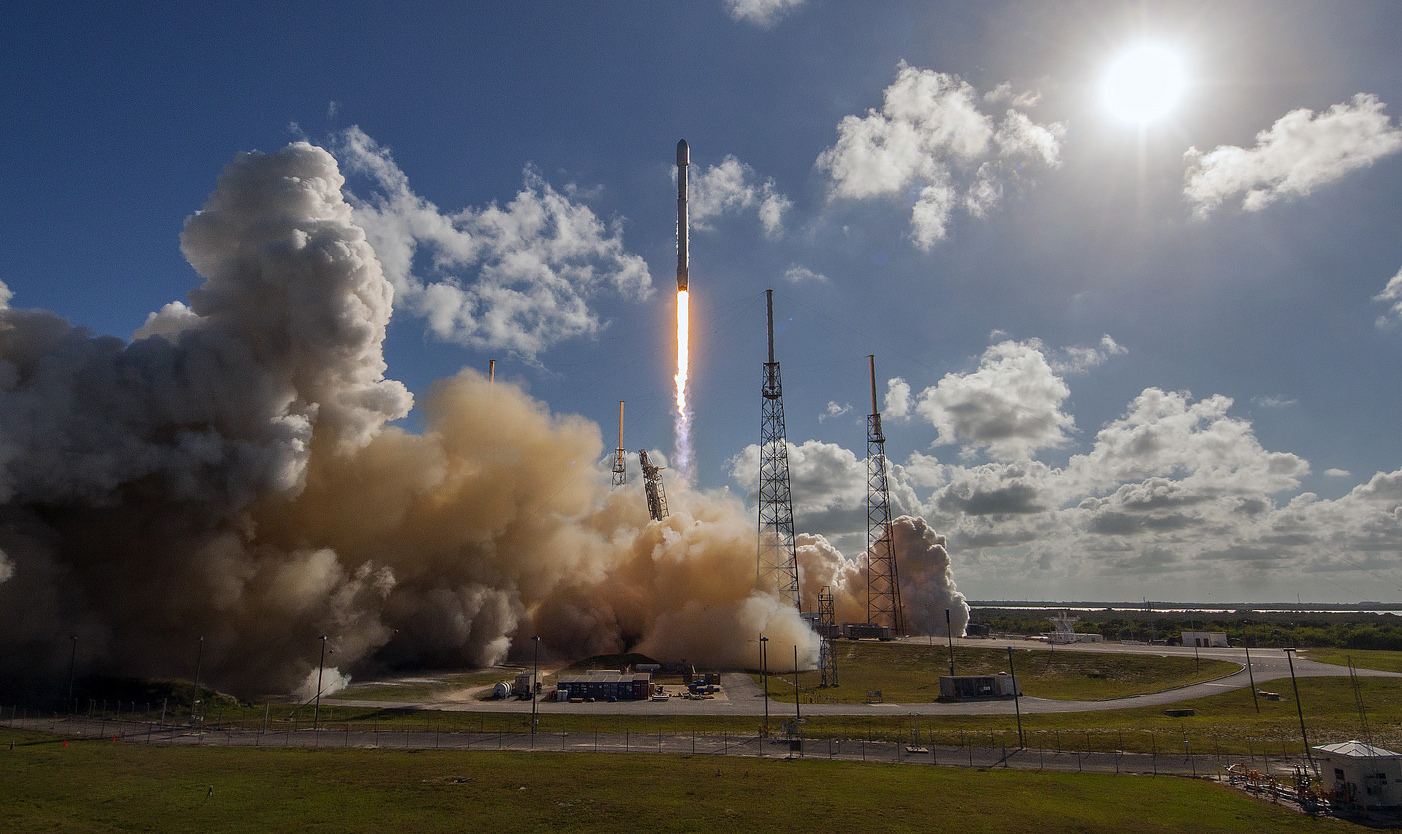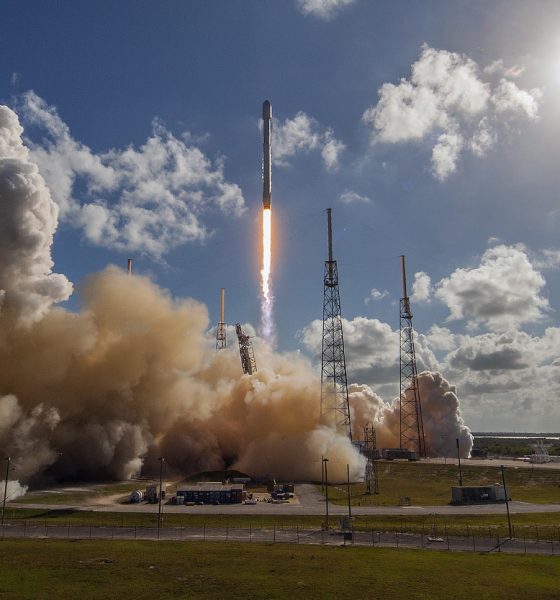

News
SpaceX flights could soon be taxed by the mile in California
California is looking to levy a new tax on rocket launches that would tax companies for each mile traveled from the surface up to the official limit of outer space, set at 62 miles above the earth.
Over the last 10 years, the rocket launch industry has undergone a revolution with the cost of space travel dropping dramatically as a result of innovations largely driven by California-based SpaceX. The company recently completed the first reuse of an orbital launch booster which promises to further slash the cost of commercial space flight. As a result, SpaceX aims to dramatically decrease the time between launches to less than 24 hours. It is this increase in activity that presumably catalyzed the proposed regulation as lawmakers seek to get their hands on a piece of profits generated from the new industry.
Regulation Section 25137-15 reads:
“Space transportation company” means a taxpayer that generates more than 50 percent of its gross receipts from the provision of space transportation activity for compensation in a taxable year.
The Vandenberg Air Force Base launch site in California is the only site in the continental US where satellites can easily be launched into a polar orbit. The state must walk a fine line to apply a fair and reasonable tax while ensuring it is not so drastic that it would chase the lucrative space launches and all of the industries supporting them out of the state.
Only two companies currently perform launches out of California: SpaceX and the United Launch Alliance, while Virgin Galactic plans to begin space tourism flights out of the state in the next few years. In a curious twist, SpaceX, the United Launch Alliance, and Virgin Galactic all support the tax, citing that it adds clarity and stability to their tax status. Without the tax, trips to space are financially vulnerable to a sudden spike in cost in the event that a tax was added in the future.
Quartz obtained a letter sent to the California Franchise Tax Board from SpaceX CFO Bret Johnsen who clarified why the company is supportive of the new tax. “Without the proposed regulation the standard apportionment rules are unclear as applied to space transportation companies. The proposed regulation provides certainty for us, as well as other taxpayers in the industry, for our California franchise tax filings going forward.”
California has long been a hub for aerospace activities. Corporate players like Boeing and Lockheed Martin each have several facilities in the state that serve as support to industry hubs like NASA’s Ames research center in Mountain View, California and the Jet Propulsion Laboratory facility in Pasadena, California.
Looking forward, SpaceX has another six launches on its launch manifest in the remainder of the year out of Vandenberg while ULA has 2 more flights expected this year. In addition to the pace of launches that will increase year-over-year for the foreseeable future and a lucrative new business model hanging out as bait, competition is surely not too far behind. This increase in competition is expected to further drive costs down and increase the frequency of rocket launches.
SpaceX recently confirmed its plans to launch 4,425 satellites into low earth orbit over the next 4 years that, if approved, would represent a three-fold increase in the number of satellites orbiting the earth.

News
Tesla FSD fleet is nearing 7 billion total miles, including 2.5 billion city miles
As can be seen on Tesla’s official FSD webpage, vehicles equipped with the system have now navigated over 6.99 billion miles.

Tesla’s Full Self-Driving (Supervised) fleet is closing in on almost 7 billion total miles driven, as per data posted by the company on its official FSD webpage.
These figures hint at the massive scale of data fueling Tesla’s rapid FSD improvements, which have been quite notable as of late.
FSD mileage milestones
As can be seen on Tesla’s official FSD webpage, vehicles equipped with the system have now navigated over 6.99 billion miles. Tesla owner and avid FSD tester Whole Mars Catalog also shared a screenshot indicating that from the nearly 7 billion miles traveled by the FSD fleet, more than 2.5 billion miles were driven inside cities.
City miles are particularly valuable for complex urban scenarios like unprotected turns, pedestrian interactions, and traffic lights. This is also the difference-maker for FSD, as only complex solutions, such as Waymo’s self-driving taxis, operate similarly on inner-city streets. And even then, incidents such as the San Francisco blackouts have proven challenging for sensor-rich vehicles like Waymos.
Tesla’s data edge
Tesla has a number of advantages in the autonomous vehicle sector, one of which is the size of its fleet and the number of vehicles training FSD on real-world roads. Tesla’s nearly 7 billion FSD miles then allow the company to roll out updates that make its vehicles behave like they are being driven by experienced drivers, even if they are operating on their own.
So notable are Tesla’s improvements to FSD that NVIDIA Director of Robotics Jim Fan, after experiencing FSD v14, noted that the system is the first AI that passes what he described as a “Physical Turing Test.”
“Despite knowing exactly how robot learning works, I still find it magical watching the steering wheel turn by itself. First it feels surreal, next it becomes routine. Then, like the smartphone, taking it away actively hurts. This is how humanity gets rewired and glued to god-like technologies,” Fan wrote in a post on X.
News
Tesla starts showing how FSD will change lives in Europe
Local officials tested the system on narrow country roads and were impressed by FSD’s smooth, human-like driving, with some calling the service a game-changer for everyday life in areas that are far from urban centers.

Tesla has launched Europe’s first public shuttle service using Full Self-Driving (Supervised) in the rural Eifelkreis Bitburg-Prüm region of Germany, demonstrating how the technology can restore independence and mobility for people who struggle with limited transport options.
Local officials tested the system on narrow country roads and were impressed by FSD’s smooth, human-like driving, with some calling the service a game-changer for everyday life in areas that are far from urban centers.
Officials see real impact on rural residents
Arzfeld Mayor Johannes Kuhl and District Administrator Andreas Kruppert personally tested the Tesla shuttle service. This allowed them to see just how well FSD navigated winding lanes and rural roads confidently. Kruppert said, “Autonomous driving sounds like science fiction to many, but we simply see here that it works totally well in rural regions too.” Kuhl, for his part, also noted that FSD “feels like a very experienced driver.”
The pilot complements the area’s “Citizen Bus” program, which provides on-demand rides for elderly residents who can no longer drive themselves. Tesla Europe shared a video of a demonstration of the service, highlighting how FSD gives people their freedom back, even in places where public transport is not as prevalent.
What the Ministry for Economic Affairs and Transport says
Rhineland-Palatinate’s Minister Daniela Schmitt supported the project, praising the collaboration that made this “first of its kind in Europe” possible. As per the ministry, the rural rollout for the service shows FSD’s potential beyond major cities, and it delivers tangible benefits like grocery runs, doctor visits, and social connections for isolated residents.
“Reliable and flexible mobility is especially vital in rural areas. With the launch of a shuttle service using self-driving vehicles (FSD supervised) by Tesla in the Eifelkreis Bitburg-Prüm, an innovative pilot project is now getting underway that complements local community bus services. It is the first project of its kind in Europe.
“The result is a real gain for rural mobility: greater accessibility, more flexibility and tangible benefits for everyday life. A strong signal for innovation, cooperation and future-oriented mobility beyond urban centers,” the ministry wrote in a LinkedIn post.
News
Tesla China quietly posts Robotaxi-related job listing
Tesla China is currently seeking a Low Voltage Electrical Engineer to work on circuit board design for the company’s autonomous vehicles.

Tesla has posted a new job listing in Shanghai explicitly tied to its Robotaxi program, fueling speculation that the company is preparing to launch its dedicated autonomous ride-hailing service in China.
As noted in the listing, Tesla China is currently seeking a Low Voltage Electrical Engineer to work on circuit board design for the company’s autonomous vehicles.
Robotaxi-specific role
The listing, which was shared on social media platform X by industry watcher @tslaming, suggested that Tesla China is looking to fill the role urgently. The job listing itself specifically mentions that the person hired for the role will be working on the Low Voltage Hardware team, which would design the circuit boards that would serve as the nervous system of the Robotaxi.
Key tasks for the role, as indicated in the job listing, include collaboration with PCB layout, firmware, mechanical, program management, and validation teams, among other responsibilities. The role is based in Shanghai.
China Robotaxi launch
China represents a massive potential market for robotaxis, with its dense urban centers and supportive policies in select cities. Tesla has limited permission to roll out FSD in the country, though despite this, its vehicles have been hailed as among the best in the market when it comes to autonomous features. So far, at least, it appears that China supports Tesla’s FSD and Robotaxi rollout.
This was hinted at in November, when Tesla brought the Cybercab to the 8th China International Import Expo (CIIE) in Shanghai, marking the first time that the autonomous two-seater was brought to the Asia-Pacific region. The vehicle, despite not having a release date in China, received a significant amount of interest among the event’s attendees.








